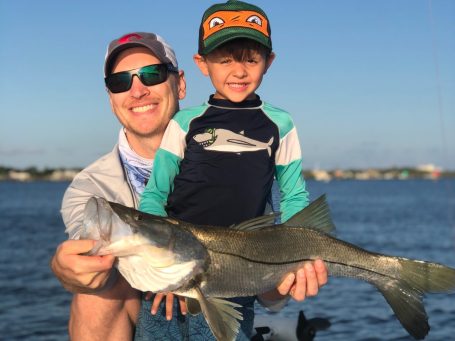Linesiders
Snook, linesiders, robalo, soapfish, sergeant fish, and saltwater pike are all names used for my favorite inshore quarry. My love affair with snook began as an early teen who had recently relocated to South Florida from the northeast. A complete novice to saltwater fishing of any kind, these fish looked like the farm pond bass I spent by childhood chasing on steroids and captured my imagination. I was amazed that these leviathans were accessible to a landlocked pubescent kid who loved fishing.
There are 12-13 recognized species of the genus Centropomus, six (seven depending on who you talk to) in the Atlantic and six in the Pacific, the largest being the Pacific black snook, Pacific white snook and common (Atlantic) snook. The IGFA all-tackle world record snook is a 59-pound, 8-ounce behemoth caught on Costa Rica's Pacific coast. As a member of the Centropomidae family, snook are cold-sensitive fish that stick to the tropical and sub-tropical waters of the western hemisphere.
In US waters this polyonymous fish can only be found in the coastal waters of peninsular Florida and southern Texas with rare exceptions, however your best bet to land a trophy linesider is South Florida. Snook can be caught from beaches and inlets to brackish backwaters. There are even fisherman who run to the freshwater spillways to target big snook when the locks open up. My all-time favorite way to pursue snook is stalking them under dock lights on a moving tide in the quiet of night, which brings me to another important aspect about linesiders.
Snook are notoriously fickle eaters and the tide plays a big part of it. They can at times be as picky as my middle daughter, turning their nose at the choicest live bait, and other times as unfussy as my son, sucking down a chunk of ladyfish laying on the bottom of a channel. I’ve cast to log-sized snook on a clear incoming tide who paid about as much as my children when the television is on and watched schools of snook whipped into a feeding frenzy by the fall mullet run leap out of the air with reckless abandon.
Common tackle used in their pursuit include a 3000 or 4000 series spinning real with a quality drag capable of slowing down a streaking snook, medium action rod with enough backbone to pull a stubborn linesider out of structure, braided line that can resist barnacle-crusted pilings, and fluorocarbon leader to deter a robalo’s razor sharp gill plates. Terminal tackle used include plugs, flair-tailed jigs, topwater baits, swim baits and baitfish mimicking flies. I’m a big fan of the Rapala Saltwater X-Rap for casting and trolling and a Berkley Gulp! Paddleshad for jigging around catwalks and pilings.
If you’re interested in starting your own romance with this sportfish of many names, come visit the Sunshine State. Any of our local guides or tackle shops will be happy to set up a date.




We need your consent to load the translations
We use a third-party service to translate the website content that may collect data about your activity. Please review the details in the privacy policy and accept the service to view the translations.

